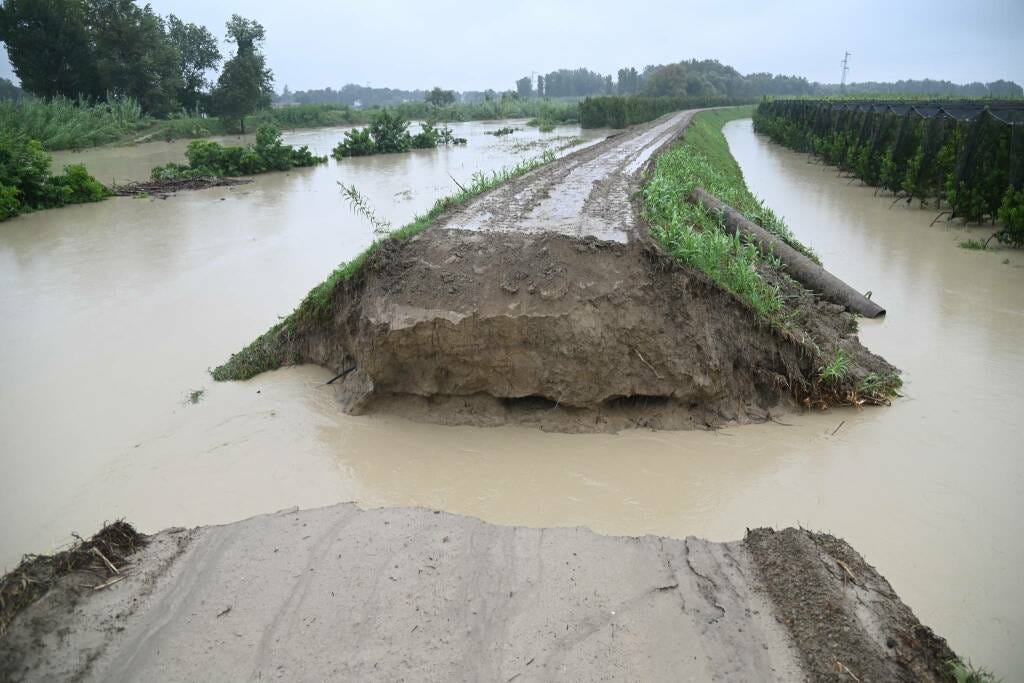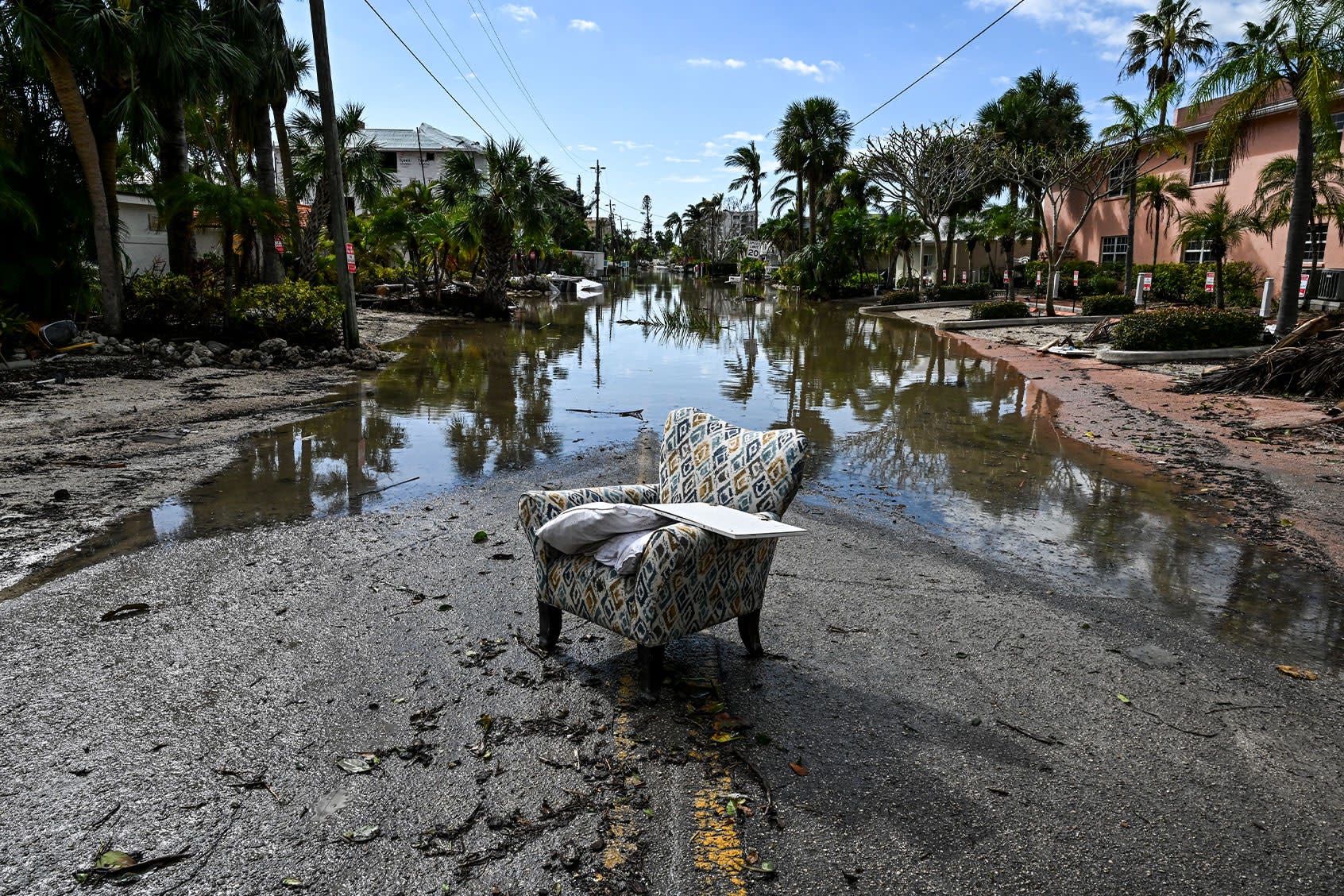There’s no other way to say this: worrying about how much it costs to prevent catastrophic climate change is patently absurd.
It is absurd in a political system where money is simply conjured out of thin air and trillions of dollars are pumped into the black hole of waste that is the Pentagon. And it is absurd when the stakes are the survival of civilization itself, at which point the deficit isn’t exactly going to matter a whole lot.
But let’s play this game for a moment, since this selective deficit hand-wringing continues to be one of the main weapons of the fossil fuel lobby and its proxies in Congress and the media. Even if we accept this ridiculous discourse on its own terms, the destruction heaped on the East Coast this past month by hurricanes Helene and Milton alone—both of which were made extra destructive as a result of the rapidly warming climate—shows that it is far more expensive to do nothing about climate change than to invest in mitigating its effects and preventing it from getting worse.
Let’s take the Inflation Reduction Act (IRA), the Biden administration’s chief accomplishment on fighting climate change, and the most recent target of this price-point fearmongering. First estimated to cost $370 billion, its unlimited tax credits have led some economists to revise this estimate upward to anywhere between around half a trillion dollars to, on the high end, more than $1 trillion. That’s a lot of money.
Now let’s look at the hurricane damage from just these two events in the past month. The most recent assessment of the damage left by Helene, carried out by experts at AccuWeather, puts the total estimate for damage and economic loss— meaning disruptions to travel and business, and the hurricane’s impact on future tourism and other industries—at $225–250 billion.

A different estimate by analytics firm CoreLogic that looks only at the physical damage puts it at $30.5–$47.5 billion. Moody’s Analytics puts the recovery cost at $34 billion. Only a small fraction of this will actually be covered by insurers, because few people in the regions affected are covered for flood damage.
We’re still waiting for more accurate figures for Milton’s damage, but according to President Joe Biden, a preliminary estimate puts it at $50 billion. Moody’s has put it at anywhere between $50–$85 billion, when property damage and economic losses are combined, though other analysts have put it at as much as $175 billion in the worst-case scenario for the Tampa region alone.
These figures will almost certainly be revised in the months ahead. But already we can see that, on the lowest end, just these two disasters—disasters that, remember, will become the new normal as the climate heats up—adds up to roughly one-twelfth of the high end of estimates of what the IRA will spend over ten years. If we take the higher end of the damage estimates—or about $335 billion—that’s about one third of that same total, and it comes close to equaling the original price tag of the IRA, which, again, is the planned spending over the next decade.
And that’s only these two hurricanes. We’re not counting how six of this century’s other deadliest hurricanes add up to more than half a trillion dollars in damage. National Oceanic and Atmospheric Administration data shows the number of severe weather disasters has been steadily rising year by year, with twenty-eight disasters last year that cost more than $1 billion a piece, like the Maui wildfire, which caused $5.5 billion in damage. Nor are we counting the damage and economic loss from more destructive wildfires, worse droughts, increased non-hurricane-related flooding, and countless other climate-related disasters and disruptions that are going to become more and more common if we do nothing—or, even worse, actively fuel the problem, as both presidential candidates are currently promising.
Analysts have already put the economic cost of climate change into hard numbers. Back in 2021, insurance company Swiss Re predicted climate change would slice global economic output by 11 to 14 percent by 2050, or a staggering $23 trillion reduction—including shrinking the US economy by 7 percent. (By contrast, the US economy shrank 4.3 percent due to the Great Recession). A more recent study from the Potsdam Institute for Climate Impact Research in Germany predicts that by 2049, climate change would reduce global income by 19 percent, or $38 trillion, with US households seeing their incomes drop 11 percent.
But to reiterate, even talking about the monetary cost of climate change is somewhat absurd in the face of its vast human consequences: death, disease, starvation, war, political instability, and mass human displacement, not just from other countries but within the United States too. The smartest thing to do, and the biggest bang for the US taxpayer’s buck, would be to start making unprecedented investments—ones much larger and more wide-ranging—in the infrastructure, technology, logistical resources, and expanded safety net that we will need to resolve this accelerating crisis and make sure Americans’ living standards are safeguarded.
The easiest way to do that is to divert the bulk of the more than $1 trillion a year the United States already spends on the military, a gargantuan sum that is not only wasteful, but fuels the climate crisis (since war and the military are some of the world’s worst fossil fuel polluters), while regularly endangering Americans. The price is simply too high not to do it.





